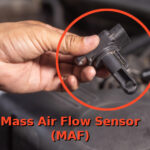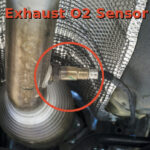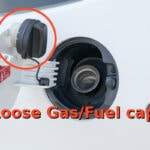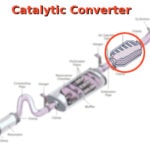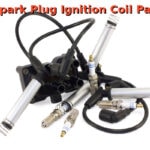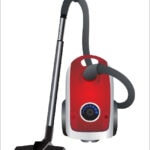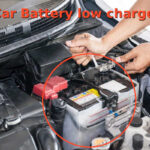Suppose you’re driving along minding your business like a happy little tree.

All of a sudden you notice something different on the dashboard display. A light has come on. It reads something like “check engine” or “service engine soon.” Maybe it just shows a picture of an engine.
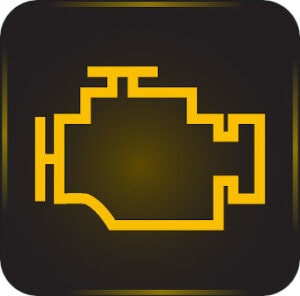
What should you do? Drive to the nearest auto shop? Pull over and call for help? Stick a piece of electrical tape over the offending message and keep motoring?
Today we’re going to be discussing 7 reasons why your Check Engine Light (MIL) could be on and what those car symbols on the dashboard mean.
Is It Safe To Drive with the Check Engine Light (MIL) ON?
In most cases, yes, it is, at least for a while.
There are many reasons for the light to come on, from the serious malfunction to the nuisance problem. In fact, one of the most common causes is a loose gap cap. That’s hardly a short-term threat to your vehicle’s well-being.
The question to ask is, does anything else seem amiss?
- Is the engine running rough or hesitating?
- Are there other warning lights?
If not, it’s probably OK to keep on driving. Just be sure to get the car checked out as soon as you can. You may have an issue that will lead to a major repair. You need to take care of it.
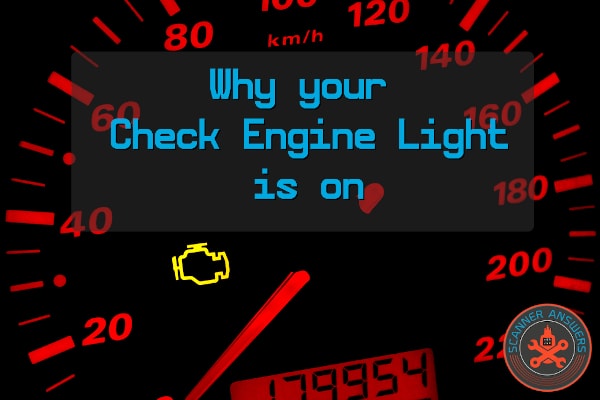
Why Does That Light Come On, Anyway?
In the 1980s computers began to get serious about monitoring and controlling your vehicle’s performance. Before that the engine light was a fairly crude device. If it lit up there was a good chance you had a serious problem. A problem that would get worse with driving. There was no additional information about what had caused the light to activate. A mechanic or a skilled DIYer had to inspect the car and figure it out. The standard advice was to pull over immediately. And not to drive until you knew what the issue was.
Since then automotive computers have become more sophisticated. They’re tied into your car’s emission system. They maintain control over things like engine speed, fuel to air mix and ignition timing. If any component of your system is not functioning properly, your computer can pinpoint exactly what that is. It can tell you what’s at fault. Also, it can also make adjustments to compensate for whatever’s not doing its job. However, those adjustments are meant to be temporary. Stress is being put on some other part. It’s important for you to resolve the problem. Otherwise you may cause wear your components aren’t designed to handle over the long haul. Ignoring an engine light can lead to a costly repair down the road.
When the car’s computer detects a problem, it stores a trouble code. You, your mechanic or your auto parts store can use an On-Board Diagnostic Scanner (OBD2). It reads the engine trouble code and give you a good idea what the problem is.
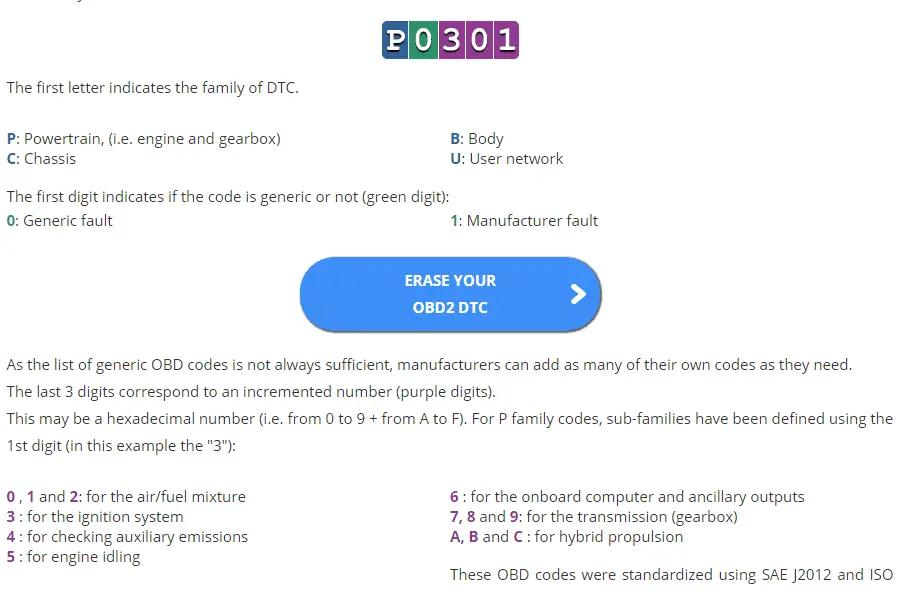
How To Tell If It’s Safe To Drive
If nothing feels different about your vehicle, it’s generally OK to keep driving.
With some models, what the light does can tell you how severe the problem is.
- A Yellow light indicates a Minor problem
- A Red light indicates a Major one
Or there’s a steady light for a small issue and a blinking light for a major one.
If the car seems to be running normally and no extra lights are on, drive on. But don’t wait too long for you or someone else to hook up a scanner. Find out exactly what’s happening. If you don’t deal with, for example, a failed sensor with a P0420 code, you may be setting yourself up for catalytic converter damage, which is no fun at all.
If there’s a convenient place to stop, you might check the gas cap. Especially if you’ve filled up recently. Take it off and retighten it. If this was the problem, the light won’t necessarily go off right away (more on that later). It should, however, disappear within 50-100 miles.
How To Tell If It’s NOT Safe To Drive
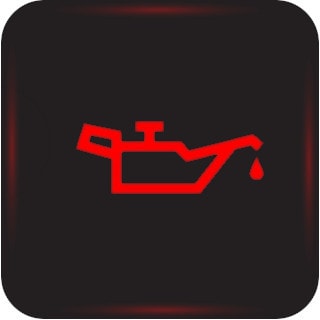
If the oil pressure light or temperature light is on, stop. If you run out of oil or overheat you risk major engine damage. Pull over and call a friend, roadside assistance or 911.
What if the car is bucking, hesitating or surging, or if it’s riding rough or making unusual noises? You may not have to stop right this second, but don’t drive far. If the ride isn’t too rough or the hesitation isn’t too pronounced, you can probably drive home. That is, if home’s not too far. Take some load off the system by reducing your speed. If the engine light is flashing or blinking that’s a sign that you shouldn’t go much farther.

7 Reasons the Check Engine Light (MIL) Is On
The check engine light, sometimes called the Malfunction Indicator Lamp (MIL), can come on for a lot of reason, but here are some of the most common ones. Your scanned trouble code may indicate one of these.
| Mass Air Flow (MAF) Sensor | Oxygen Sensor Failure | Loose Gas Cap | Catalytic Converter Failure |
| Sparkplug/Ignition Coil Issue | Vacuum Leak | Dead Battery |
1. Mass Air Flow (MAF) Sensor
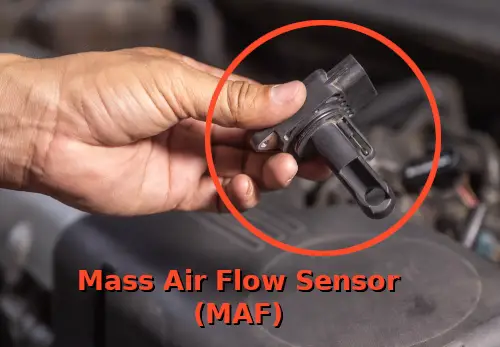
The MAF keeps track of how much air is coming into the engine. That way fuel and air can be mixed in the most efficient proportions. If it isn’t working, it can affect fuel economy as well as engine performance. Over the long run, the wrong mix can wear out the spark plugs faster. It can damage the oxygen (o2) sensor and even the catalytic converter.
[su_icon_text icon=”icon: wrench” icon_color=”#00a9e0″ icon_size=”33″]How To Fix[/su_icon_text]On many cars the MAF is on or near the air filter box and is easy to replace. Sometimes you can fix it just by cleaning it. There’s a MAF spray made just for that purpose. Spray it in the holes, let it dry 30 minutes and put it back in. If that doesn’t take care of the problem you’ll have to install a new one.
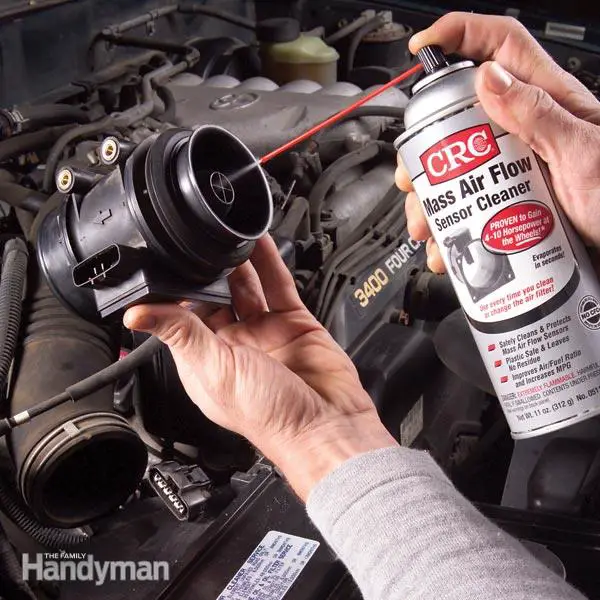
The MAF can run anywhere from $100 to $500. Price depends on your model and whether you buy a manufacturer or aftermarket part. If a mechanic installs it it will be another $50 to $150.
2. Oxygen Sensor Failure
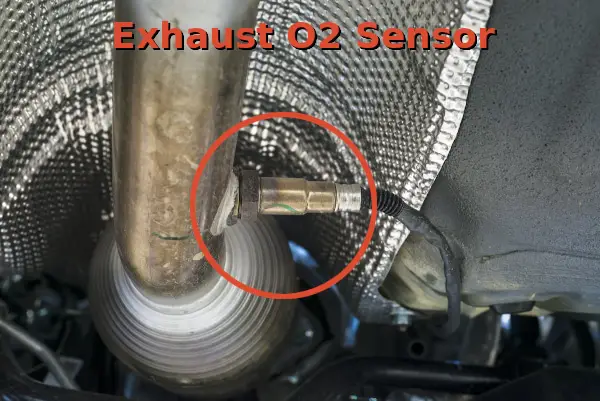
The oxygen sensor, in the exhaust pipe, tells your computer how much unburned oxygen is in the fuel system. With a bad sensor your fuel efficiency will suffer. Your spark plugs and catalytic converter could eventually be damaged.
[su_icon_text icon=”icon: wrench” icon_color=”#00a9e0″ icon_size=”33″]How To Fix[/su_icon_text]Most DIYers can replace the sensor with a socket wrench. Use an extension bar and the socket specific to the sensor. The sensors are fitted tight, and you don’t want to damage the exhaust pipe.
You will often find the sensor in the exhaust manifold near the engine bay, or towards the rear muffler (like the image above). Vehicles can have multiple O2 sensors, so I’d suggest using an OBD2 adapter to see exactly which oxygen sensor needs to be replaced.
[su_icon_text icon=”icon: dollar” icon_color=”#2afb48″ icon_size=”33″]Price to Repair[/su_icon_text]The part is $20 to $100. Be aware that some aftermarket sensors won’t turn the trouble code off. A mechanic will do the job for $100 to $400 including part markup.
3. Loose Gas Cap

This is one of the most common reason for an MIL and perhaps the easiest to fix.
[su_icon_text icon=”icon: wrench” icon_color=”#00a9e0″ icon_size=”33″]How To Fix[/su_icon_text]If it’s loose, tighten it. If it’s broken or missing entirely, replace it.
[su_icon_text icon=”icon: dollar” icon_color=”#2afb48″ icon_size=”33″]Price to Repair[/su_icon_text]Vehicle fuel caps run anywhere from $10 to $60.
4. Catalytic Converter Failure
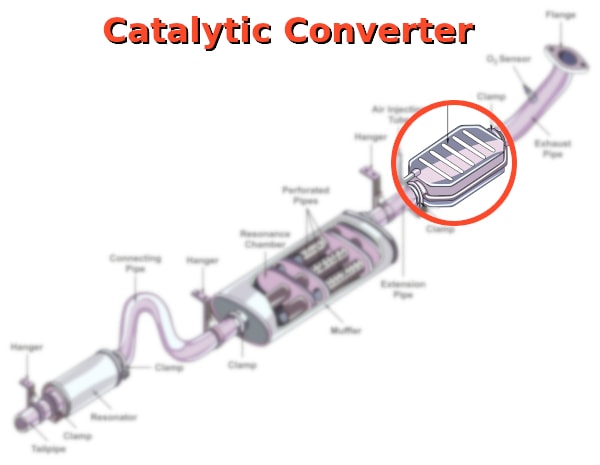
This important device turns poisonous carbon monoxide into ordinary carbon dioxide. If it isn’t working your performance will suffer. If your state has an emissions test you won’t pass.
If you pull the trouble code, it will be something like: P0420 “Catalyst System Efficiency Below Threshold“.
[su_icon_text icon=”icon: wrench” icon_color=”#00a9e0″ icon_size=”33″]How To Fix[/su_icon_text]Some cats are welded on to the exhaust and some are simply bolted on. Most likely if this is the issue, you will have to saw it out of the exhaust system and get a muffler shop to weld a new one in for you.
Scotty Kilmer made a video showing how to clean the cats with lacquer thinner… Now I’ve never tried this, but Scotty knows cars so this would be something worth testing if you got a P0420 code!
[su_icon_text icon=”icon: dollar” icon_color=”#2afb48″ icon_size=”33″]Price to Repair[/su_icon_text]OEM or “direct-fit” catalytic converters can run $500+ just for the part.
Depending on the State that you live in, and the year of your vehicle, you may be able to purchase an Aftermarket or “Universal Fit” cat converter, however, the substrate won’t be as good and they may not filter the engine exhaust as well. This means you might not pass emissions and the CEL may stay on.
Cleaning the converter is your best and cheapest option 🙂
5. Sparkplug/Ignition Coil Issue
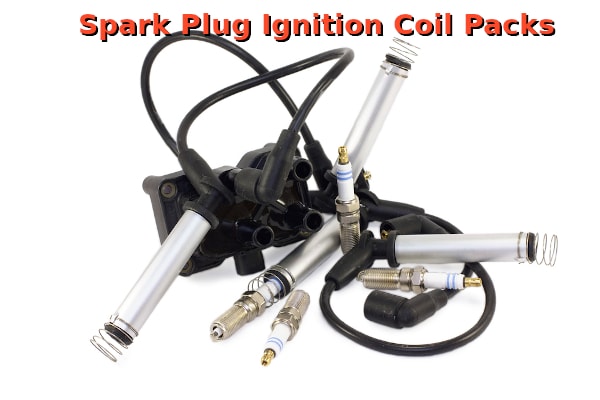
These control the ignition of the air-fuel mixture and the transfer of the spark. If any of these isn’t working properly, fuel economy and performance deteriorates. The oxygen sensor and catalytic converter can be damaged.
Hesitation and rough running are classic symptoms of these problems. Some modern computers can compensate and keep things running smoothly for a little while.
[su_icon_text icon=”icon: wrench” icon_color=”#00a9e0″ icon_size=”33″]How To Fix[/su_icon_text]Replace the plugs and wires or any coil that is bad. Many computer systems will tell you which cylinder is misfiring, You can tell if it’s the plug or the coil by switching the plug to another cylinder. Ideally you should use a torque wrench to tighten the spark plug. It’s a good idea to replace the spark plus wires along with the plugs. If the problem is with the wires you can usually tell with visual inspection. Make sure there’s no oil on the spark plug threads while you’re at it.
If you’re feeling up for some DIY mechanic’in, Chris Fix shared a nice video showing how to replace the Spark Plugs and Wires on his Mazda pickup:
[su_icon_text icon=”icon: dollar” icon_color=”#2afb48″ icon_size=”33″]Price to Repair[/su_icon_text]Plugs are normally under $100 for a set and labor is $50 to $150. The wires are around $100 and labor about another $100. Coils are $150 to $250 each and labor another $50 to $100.
However, as I once found out, on some cars there are plugs where I can’t reach them. It’s difficult work even for a mechanic to get at them, and labor costs are hundreds higher.
6. Vacuum Leak
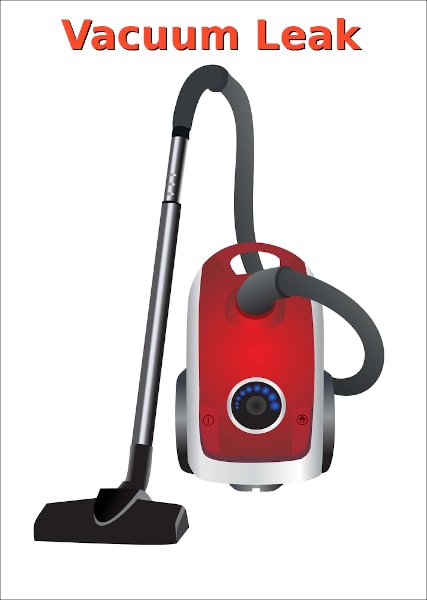
If there is a leak in the hose vacuum system, the engine will tend to idle rough and may stall. There may also be hissing noises. Codes like P0300, P0171, and P1188 are commonly seen with this issue
[su_icon_text icon=”icon: wrench” icon_color=”#00a9e0″ icon_size=”33″]How To Fix[/su_icon_text]Sometimes a casual inspection will show you which hose is at fault. For a more thorough check, find the vacuum diagram for your vehicle. It’s in the manual or inside the engine compartment. Check all the indicated hoses with the engine running. Unplug and check the ends. Run your fingers along the hoses. A spray bottle with soapy water sprayed on hoses will bubble when there’s a leak. Use a mirror and flashlight to see all sides. Check connectors for cracks.
Replace any faulty parts.
Another way to find that pesky leak is with a Smoke Machine, Cigar, or vape pen. Basically you’ll force the smoke into the air intake and the smoke should seep out any leaks in the hoses and, BAM, you’ve isolated the culprit! Watch Treats On The Streets video below with steps on doing this.
[su_icon_text icon=”icon: dollar” icon_color=”#2afb48″ icon_size=”33″]Price to Repair[/su_icon_text]The problem may be anything from a loose hose to a damaged manifold intake gasket. The cost could be anything from practically nothing to hundreds of dollars.
7. Dead or Dying Battery
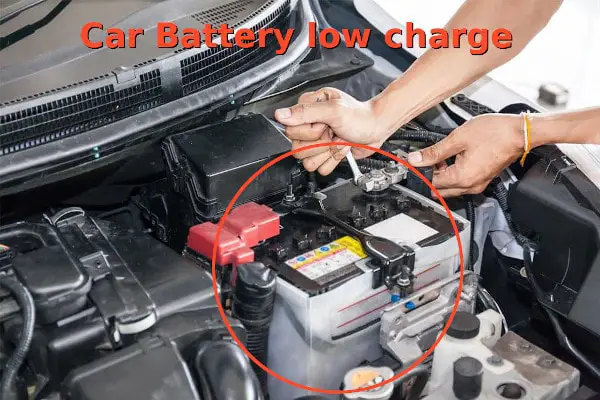
If your battery is deficient, you should see a batter warning icon on your dashboard, but a Check Engine Light may illuminate as well.
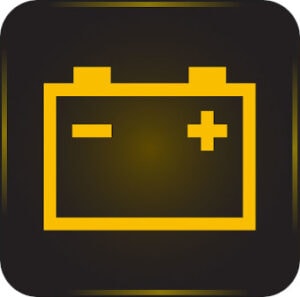
If the battery does not have a dead cell you can recharge it or jump start it. If you can’t charge it to more than 10.5 volts, the battery needs to be replaced. Some battery shops and auto parts stores will try to charge your battery at no cost. Of course they hope to you a new one if the old one is shot.
It’s best to use a charger to bring your battery to full voltage. It’s possible to drive the car around and let the alternator recharge the battery. However, alternators aren’t built to do that. It can shorten their lives.
[su_icon_text icon=”icon: dollar” icon_color=”#2afb48″ icon_size=”33″]Price to Repair[/su_icon_text]Most car batteries run $50 to $250. If you live in a cold weather climate you’ll need to spend toward the high end to get a high CCA. Some battery shops will install one you bought from them, free or at a low cost.
ConsumerReports thoroughly tested car batteries and these were their top rates ones:
- AC Delco Professional top post
- Optima Redtop
- Wal-mart Everstart Maxx
- Autozone Duralast Gold
How To Reset Check Engine Light
You probably want the light to go off as soon as possible right? Hold up there cowboy. You gotta fix the problem before clearing the light, otherwise it’ll just come back!
Most of the time after you fix the trouble, the MIL light will turn off after several start cycles or in 50-100 miles. However, it’s good to reset it so you know the issue is resolved.
In some cars with a touch-screen interface resetting the MIL is one of the options. In other vehicles you can reset the light by turning the ignition on and off several times.
Some lights will reset if you disconnect the battery. In other cases you have to pull the ECM fuse while the battery is disconnect and hold it out for 2-3 minutes.
The sure way, though, is to clear the trouble code with your scanning tool. You can pick these up for $20-$500 bucks and we wrote a ton of guides on our site about choosing one. But to keep it simple, we suggest using either a Bluedriver, BAFX, or FOSEAL adapter with your smartphone.
And if you don’t wanna fork out the case for one, most parts stores like NAPA or Autozone will pull the codes for you for free!
OBD2 Scanners and Adapters
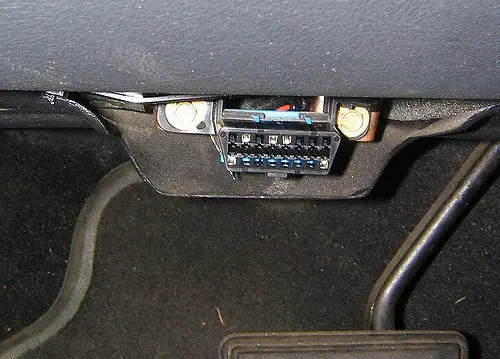
The modern on-board diagnostic scanner, OBD2, works in any vehicle 1996 or newer. Prior to that you had to have an OBD1 scanner for your specific car. In 1996 federal law mandated that scanners be universal.
It fits into a port that’s found under the dashboard on the driver side. Plug it in and turn the car on to provide power for it. It may ask you for the VIN or other vehicle-specific information. Press the “scan” button to find any trouble codes. It takes seconds.
Once you think you’ve solved the problem hook the scanner up again. Press the button that clears the codes.
Conclusion
I hope you have many happy miles of driving before your check engine light comes on again. When it does, you’ll know just what to do. Even if it’s not one of these seven problems, the trouble code will tell you. You or your mechanic will know exactly where to look.
And hey, if you have any questions or comments on this article, shoot us a message and we’ll try to help out 🙂
– Mike
